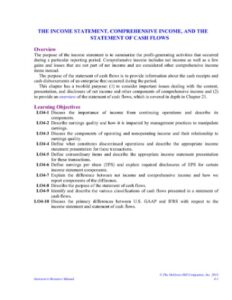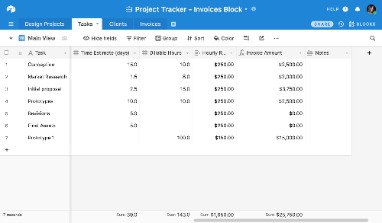Content
Initial action taken regarding the claim can be referral to a conference, referral to a hearing, or dismissal of the claim. On the other hand, working excessive hours can lead to burnout and decreased productivity. Overtime can be a delicate topic, but it’s important to have a discussion about it before making any decisions. These 3 talking points will help you get the conversation started and ensure that everyone is on the same page.
- An employee who makes $20 per hour would receive $30 per hour in overtime pay.
- Additionally, under most circumstances the employer may discipline an employee, up to and including termination, if the employee refuses to work scheduled overtime.
- In the above example, the regular rate is simply the hourly rate of the employee.
- They argue that if an employer is willing to pay for the extra hours, then there’s no reason why employees shouldn’t be required to work them.
- Except for certain states that require premium pay daily, overtime is calculated by the workweek.
Signing an opt-out clause does not require employees to work more than 48 hours a week forever, though. Enable your employees to enter their working hours in an efficient, legally compliant and secure system. In this article, we’ll address some of the specific nuances when it comes to calculating overtime, the letter of the law, and how to make overtime calculators in your organization a cinch.
Implement flexible hours
However, if the employer “willfully” violated wage laws, the statute of limitations extends to three years. If you’re still using old-school physical clock-in cards to log hours, you’re at risk of losing hundreds, or even thousands, of dollars a year https://quick-bookkeeping.net/cost-of-goods-sold-for-cleaning-industry/ through inaccurate hours paid. Tracking employees’ hours and attendance digitally comes with a myriad of benefits, but one of the most obvious is it reduces the margin of error. This position requires your core to put in overtime, says Henry.
- For example, an employee who makes $10 per hour must receive $15 per hour if they work more than 40 hours in a week.
- You have to pay them the normal wages for the first 40 hours and overtime for 10 hours.
- Employees earning more may also still qualify if they do not fall into an exemption category.
- You can find the full list of exempt duties on the Department of Labor’s website.
- According to the FLSA, a work week has 40 hours, which are 8 hours for five days.
Additionally, employers need to get written notice from their employees that they have received and understood this notification. Withholding earned wages, including overtime pay, violates the law. If What Is Overtime? your employer refuses to pay overtime or pays your regular work for overtime hours, you can file a claim for unpaid overtime. First, the regular rate must be equal to or greater than the minimum wage.
What is a overtime? Definition and examples
The federal minimum for overtime for hourly employees is that the person must be paid one and a half times the regular hourly rate for work over 40 hours a week. Yes, there are certain types of payments that are excluded from the regular rate of pay. In the US, FLSA overtime requirements state that non-exempt employees who work over the 40-hour workweek should receive at least one and one-half times their regular pay rate. Using the time-and-a-half rule of thumb, you’d calculate overtime pay by multiplying an employee’s hourly rate by 1.5 and then multiplying the result by the number of overtime hours they worked.
- This can help to prevent employee fatigue and also help to keep overtime costs under control.
- Mandatory overtime – This type of overtime is mandatory and includes provisions set in the terms and conditions of the employee contract.
- This includes productivity bonuses, longevity pay, and shift differentials.
- To work out a salaried employee’s overtime, you’ll have to calculate what their hourly wage would be from their monthly or weekly salary.
- ● $10 hourly wage becomes $15 ($10 x 1.5), with time and a half pay.
Overtime on a flat sum bonus must then be paid at 1.5 times or 2 times this regular rate calculation for any overtime hour worked in the bonus-earning period. Overtime on production bonuses, bonuses designed as an incentive for increased production for each hour worked are computed differently from flat sum bonuses. To compute overtime on a production bonus, the production bonus is divided by the total hours worked in the bonus earning period. This calculation will produce the regular rate of pay on the production bonus. Overtime on the production bonus is then paid at .5 times or 1 times the regular rate for all overtime hours worked in the bonus-earning period.
Should You Make your Workers work Overtime?
An overtime compensation agreement form should be signed and dated by each non-exempt non-represented staff employee and Police Officer Unit employee before the performance of any overtime work. Departments should provide agreement forms to newly hired non-exempt employees in these units, and to those current employees whose status changes to non-exempt upon transfer, reclassification, or promotion. Completed forms should be retained in the employee’s department personnel file. Overall, there’s no easy answer when it comes to overtime pay. If you do decide to make your employees work extra hours, just be sure to do it in a way that’s fair and beneficial for both sides. Flexible schedules work especially well for salaried employees who are focused on task completion instead of working a set number of hours.

Overtime pay is the compensation an employee receives for working beyond their standard working hours. For instance, if an employee is eligible to receive overtime pay and their standard workweek is 40 hours, working 55 hours in a given week means they will earn overtime pay for those extra 15 hours. Overtime workis defined as minutes or hours of time worked before or after the normal daily schedule of hours or the normal weekly schedule of hours. Overtime will be determined and scheduled by management and will become available to employees only when the Company cannot produce or attain its requirements with bargaining unit employees working regular hours.
How to calculate overtime pay for salaried employees
Overtime pay in New York is based on hours worked in a given workweek. Therefore, time-and-a-half, double time, or any other amount higher than the agreed rate is not required because an employee was performing work after eight hours of one day or working on the weekend. It is needed because he was working more than 40 hours of a single workweek, or 44 for ‘live in’ employees.
Finally, add together the two wages to get the employee’s gross pay. Specific roles including farmworkers, some seasonal workers, airline employees, local delivery drivers, taxi drivers, and switchboard operators. Governments often cap overtime once a worker exceeds a certain number of hours. People will be much more likely to want to work hard for you if they know that they are valued and their extra hours are being fairly compensated. A job duty that would be considered exempt would include high-level responsibilities. For example, this could be executive, administrative or computer-based duties.
How does travel time factor into overtime?
The new rule has a higher salary level for exemption from overtime than the previous rule; that is, more employees qualify for overtime. Read this article then take a look at the pay for your exempt employees to make sure you are complying with these new regulations. Divide your total earnings for the workweek, including earnings during overtime hours, by the total hours worked during the workweek, including the overtime hours.


